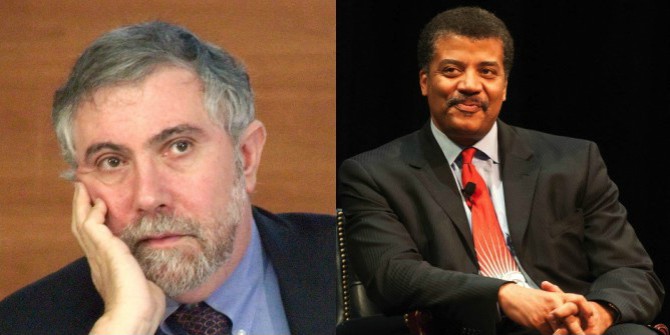The United Arab Emirates have taken steps to alleviate gender inequalities in its legal system, amending their labour, personal status and criminal laws. The motivation is subject to debate. Carefully curated images often do not reflect the experiences of ordinary Emirati women, but important strides towards gender equality have been made. Simeon Djankov and Karolin Lehmann write that without reliable data, assessing the effectiveness of gender legal reforms remains a challenge.
Middle East countries fare poorly on international measures of women’s rights. The United Arab Emirates (UAE), up until recently, were no exception, consistently ranking at the bottom of global indices assessing gender equality and women’s empowerment. In 2019, it placed second to last on the World Bank’s Women, Business and the Law (WBL) Index, scoring 29 out of 100, indicating that women had less than a third of the legal rights of men. However, by 2023, the UAE’s score almost tripled to 82, surpassing the global average of 77.
Figure 1. Women, Business and the Law (WBL) index for the United Arab Emirates, 1971-2023

Source: World Bank (2023); authors’ calculations.
Since 2019, the UAE has taken significant steps to alleviate gender inequalities in its legal system, including by amending their labour, personal status, and criminal laws. The government initiated committees to identify and amend laws that discriminated against women in various aspects of Emirati society. The motivation behind this sudden surge in legal reform is subject to some debate. Some scholars posit that the change in gender discriminatory laws was predominantly driven by international initiatives such as the United Nations’ Committee on the Elimination of Discrimination against Women (CEDAW) and the Sustainable Development Goals (SDGs) and the #MeToo movement. Others attribute it to a political campaign burnishing UAE’s international image as a modern society capable of attracting global human capital and investments.
The transformation of Emirati women’s roles in society can be seen within broader changes in the UAE’s socio-economic landscape during the 20th century. Before UAE’s oil discovery, women actively participated in various economic activities such as agriculture and the thriving pearling industry. Women from the middle and lower social classes experienced a considerable degree of economic autonomy, engaging in diverse occupations ranging from trading goods to tailoring, as well as running retail shops, pearling ships, and real estate businesses. However, the Great Depression of 1929 greatly affected the pearl industry, decreasing demand and thereby creating challenges for the economic wellbeing of women. This period shifted their labour to domestic responsibilities as the male workforce sought better opportunities in the neighbouring economies following the discovery of oil, leaving women with increased household burdens.
Following the discovery of oil in the late 1960s, the UAE experienced a significant economic upturn. During that time, the government emphasised the importance of education for women, which resulted in an increase in female literacy rates from 22 per cent in 1970 to 70 per cent in 1985. Paradoxically, the amassed oil wealth seemed to impede women’s economic and social advancement. Challenging work conditions within the oil industry prohibited their participation, while the significantly higher earnings of male family members further discouraged their involvement in the workforce. Despite the strides towards better educational attainment, the participation of women in the labour force progressively declined to roughly 20 per cent by 2022. This shift was led by a noticeable trend of women allocating their time to household activities, reflecting a unique dynamic between economic growth and traditional gender roles in the UAE.
The presence of expatriate professionals has necessitated changes in the country’s gender policies. A component of UAE’s campaign strategy is launching organisations dedicated to women’s rights such as the General Women’s Union and the Dubai Women Establishment. This form of advocacy is dubbed “state feminism”, as these organisations receive generous government sponsorship to promote gender equality through public events and paid advertisement. The UAE’s advertising campaign narrates the accomplishments of women in high positions of power (such as surgeons, pilots, engineers, professors and diplomats) and frames their achievements in nationalistic terms, representing the new Emirati standard. These carefully curated images often do not reflect the experiences of ordinary Emirati women, as many of the depicted women are affiliated with the royal family. Royal women in the UAE face a dual role, symbolising progress while adhering to traditional values. Attempts to break free from these constraints have led to harsh consequences, including abduction, imprisonment, and torture.
Nevertheless, important strides towards gender equality have been made. Since 2019, the UAE introduced gendered legal reforms focusing on improving the working conditions for women and mothers as well as addressing domestic violence and sexual harassment. Some gender biases continue to persist, exemplified by the wife’s legal obligations to the husband as well as in sectors such as healthcare, where access to maternal care can be withheld if the mother does not provide a marriage certificate. Moreover, these legal reforms do not apply to all women equally. Migrant women face significant difficulties, as they are subject to the kafala sponsorship system and thus receive no protection under the UAE labour law, making them vulnerable to exploitation.
Due to the lack of reliable data on women’s outcomes in the UAE, assessing the effectiveness of gender legal reforms remains a challenge. According to the UN Women Data Hub, 60 per cent of the gender-related data is missing for the UAE, with no information regarding gender gaps in income, care labour or domestic violence. The country’s female labour force participation continues to trend below 20 per cent. Emirati women predominantly work in the public sector due to their perceived unsuitability for private sector jobs. Gender gaps also persist in political representation, with women holding only 18 per cent of ministerial positions and ten per cent of positions in the foreign service.
While the UAE has made some progress in gender reforms since 2019, there still seems to be a gap between the perceptions and outcomes of the UAE’s legal changes. It remains to be seen whether the gender reforms reflect tangible improvements in the lives of women from all social classes in the Emirates.
- This blog post represents the views of its author(s), not the position of LSE Business Review or the London School of Economics.
- Featured image provided by Shutterstock
- When you leave a comment, you’re agreeing to our Comment Policy.





